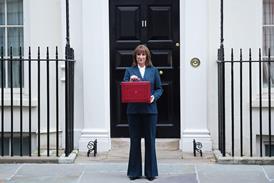The ‘7P’ process
In this third of a series of articles on effective deal-making, I look in more detail at the third and fourth Ps for successful deal-making – power and players.
SEE ALSO
- Effective deal-making: part 1
- Effective deal-making: part 2
- Effective deal-making: part 4
- Effective deal-making: part 5
POWER

This P demonstrates the importance of the power balance in deal-closing and how you can ensure you have the upper hand. It also relates to the critical issues of ensuring your organisation is culturally ready for the deal power-wise and whether any organisational change is required at this time.
Information and knowledge enhance your power
Recognised types of power include:
- Personal organisational power: Based on a person’s position within the organisation’s hierarchy (though be careful not to fall into the trap of believing that lower-ranking staff cannot be powerful; we have come across some very powerful executive assistants).
- Resources power: Comprised of the breadth and depth of resources at a person’s disposal (though the party with most resources at hand is not always the most powerful).
- Shared history power: Based on insights from prior interactions with the other party. Generally speaking, the more you know about the other side, the more you can plan and prepare an effective strategy against them to optimise your deal (though, of course, this power is available to both parties). However, be mindful that it is possible to give away too much ground when you are too familiar with the other side.
- Informational power: Where a person has access to important or valuable information.
Understanding the relevance and importance of information, and how it can be leveraged can assist in building your power. The more you know about what is unfolding, the more you can reliably assess your position, develop your strategy and then plan how best to execute the deal. Not only is information relevant to inter-party dynamics, good information management skills are also essential in corporate deals to avoid wrong decisions.
Information for information’s sake is worthless: what matters is how you apply or use the information in the context of the deal. You need the right information to help you plan and execute a deal satisfactorily. Receiving valuable or meaningful information at the right time can provide you with the power to support your most important issues. This in turn can help you to understand what the important or primary and secondary issues are for the other side.
Even the act of deciding which information to provide or withhold and how best to do this can significantly enhance the deal-closer’s position. Information can be given through many methods, ranging from direct, unambiguous statements to gestures, suggestions, innuendos and subtle hints. One thing is for sure: the deal-closer needs consciously to decide which information to give in order to provide maximum leverage to their deal. But remember, information flow is not a one-way street. If you use information as power to compromise the other side, you will quickly find that other people stop sharing information with you – so you must use information responsibly.
Listen deeply and use silence strategically
Never underestimate the power of seeing things through the perspective of the other side in a deal in terms of your deal-closing strength. The best way to know what the other side wants is to ask them and then listen to their response.
By using active listening skills, you can pick up hints, clues and other signals from body language, movements, volume and tone. From these, ultimately you may be able to assess the other side’s positioning, likely flexibility and direction. For example, if you hear ‘I’m hoping for…’ or ‘approximately…’, this weak language may suggest uncertainty and weakness.
Generally, deeper and slower voices tend to project more confidence, while a variable tone is seen as more engaging than a monotone.
A good deal-closer needs to be fully present and engaged in the communication, with both body and mind actively involved. Active listening also requires you to ask questions, nod encouragement and partake in other to-and-fro activities and signals. Done the right way, you can significantly enhance your power. Good deal-closers also use silence at strategic points in the discussion. Silence, if used the right way, can be a powerful tool. I have often found that the irresistible combination of a direct question and the subsequent discomfort of the ensuing silence can elicit an answer.
Networks and relationships build your deal-closing power
The closer you get to knowing the intentions, desires and assumptions of the other side in a deal, the more likely you are to get what you want from the deal. So, using networks and relationships is an important additional way for deal-closers to gather the all-important information they need, which then enhances their knowledge and ultimately their power. This is particularly the case if the network or relationship connects you to the key decision-maker(s) on the other side.
You are more likely successfully to execute business deals for a longer, more sustained period of time if you do so through relationships built upon mutual trust. How long it takes to build mutual trust depends on many factors. For in-house lawyers in particular, building lasting, trusting relationships with commercial colleagues is critical to success.
Bear in mind, though, that close relationships are not common in corporate deals. Also, relationships can sometimes get in the way if they hamper objectivity, leading to a less appropriate outcome. Being too close to the other side can skew a deal-closer’s judgement, in that they may become too focused on previous conflict or paying back some past due instead of focusing on the matter at hand – closing the current deal.
Build the appearance and perception of power
Careful planning allows you to frame your preparations for maximum effect and deal power, highlighting your potential deal strengths and weaknesses and providing you with the ability to fix any holes in your position. As with planning, do not cut corners. As a first step, conduct a comprehensive assessment of relative power between both sides. Your relative power directly affects your ability to execute deals. In fact, relative power is one of the most important factors that can determine the outcome of a deal.
Deal power is a frame of mind and can be developed. Even if, initially, it looks like there is a significant imbalance of power between you and the other side, by being smart, diligent and measured a good deal-closer can readjust that imbalance – for example, by moving the discussion away from price to quality or some other emotive subject.
Power is not static. It usually ebbs and flows during a deal and can change sides very quickly. Whether you like it or not, your power is always influenced by your credibility, legitimacy, knowledge, authority, appearance and influence. Perception is an extremely potent power source in deal-closing: perceived power can be as powerful as actual power. So focus on building the appearance (or at least the perception) of your own power.
You can create, emphasise or reinforce your power through:
- SWOT (strengths, weaknesses, opportunities and threats): This analysis can provide significant value in terms of identifying and improving your power-base. We regularly use this tried-and-tested tool with clients.
- Incentives: The weaker your position, the more you may need to focus on offering incentives to the other side to get them over the line. The more incentives you can offer that can satisfy the other side’s needs, the greater your chances of increasing your power. This is even more the case when you present them as value propositions.
- Persuasion: Very powerful in helping you achieve what you want, again especially if you use value propositions.
Use an agenda to control the discussion
Agendas are a good way of taking – and retaining – control of a discussion. If you set and circulate an agenda in advance of a meeting, you steer both the deal-planning and the face-to-face discussion. Agendas also help to prevent the other side suddenly changing tack without prior notice, as you have a record of what was agreed for discussion.
Use deal sheets to reinforce your power
A deal sheet – a summary of deal discussions – is a valuable tool that provides a deal-closer not just with an ongoing record of the discussions (which is important in itself) but also with the space to stop, pause, and take stock of the progress of the deal journey. That space can be particularly useful when tempers and egos start to show. A deal sheet is useful in terms of calibrating where the discussion is at, while also providing both sides with the ability to tweak and reframe their proposals as and when needed. Used the right way, deal sheets keep the focus on the main issues at hand and confirm areas of agreement to date, as well as outstanding action items.
PLAYERS
This P demonstrates how important the players involved in a deal are to the deal’s successful outcome. Regardless of your strategy and planning, the success of any deal is reliant upon the people involved.
Choose your deal team carefully
Regardless of your strategy and planning, the success of any deal is reliant upon the people involved. Unless you are running a deal alone, which is rare from a corporate perspective, your choice of deal team is critically important. The shape of your team has a dramatic impact on your power. The right members can enhance the knowledge, credibility, authority and perception of your deal team. So, who to include, who to leave out, roles and reporting methods are important.
Core deal team roles
There are a few common core team roles:
- Strategist: This is the person who ultimately determines the deal strategy, the deal zone parameters and often the deal finances. They may not be pivotal to the actual face-to-face deal discussions, but they will play an essential role in setting the deal direction.
- Dealmaker: This team member leads the face-to-face deal discussions around the proposal, right through to the deal close.
- Interpreter: This team member usually focuses on information-gathering and determining the other side’s positioning and requirements. They are a diligent listener. They watch and listen for all verbal and non-verbal clues, and then recommend changes in deal direction if necessary.
- Coordinator: This team member needs to be as objective as possible, as they run the deal process by keeping the discussion on track, and managing the agenda and summaries. This role is particularly important in multi-issue deals, which are bound to get tense and difficult. A coordinator needs to be firm and serene.
- Implementer: This team member is expert in successfully implementing the outcomes from a successful deal. We find this role is often lacking in a deal team and that the people making the deal will not always implement it operationally (which often leads to suboptimal results).
Work out who is on the other side of the table
It is important to map out the key players on the other side of the deal table, as you are ultimately going to have to convince them all of your proposals. As part of the process of information-gathering to bolster your deal-closing power-base, you need to determine who is on the other side’s deal team and each person’s respective power, influence and final say in the deal-closing process. Assume at your peril that the other side’s intentions are the same as your own. The more you understand the other side’s motives, intentions, strengths and weaknesses, the more you can use that to your advantage.































No comments yet